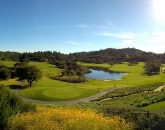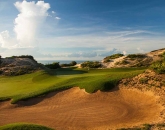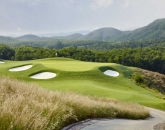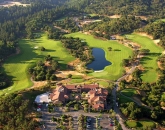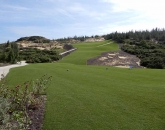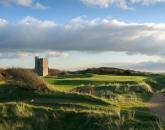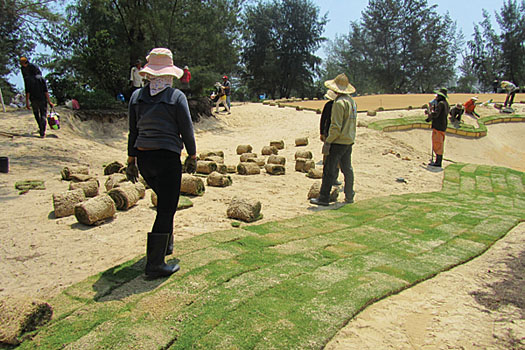
Seashore Paspalum is “greener” than both Bermuda grass and Zoysia. Some may even deem it to be visually more striking than the other warm season grasses, which very likely contributes to its popularity. It’s also a more salt-tolerant grass which helps if the water source is poor, but it’s much more maintenance intense than either Bermuda or Zoysia and requires a lot more water to keep the playing surfaces in good condition.
Zoysia is not as popular on golf courses as Bermuda or Paspalum, which is hard to fathom given that it requires less in every way when compared to the other two. If it’s not the grass of choice for golf courses it’s certainly the most popular grass in the suburban areas where it grows on the sides of roads, in people’s backyards and even on the beach. It’s a low maintenance grass that is drought tolerant and has adapted to the climatic conditions prevalent in Southeast Asia. Many superintendents (and builders) regard Zoysia as the king of grass in the region. It has one demerit: it is slow establishing and this contributes to its lack of popularity.
Choosing the right grass is more complicated than picking a favourite girlfriend - although at times I wonder if it’s not made to be over complicated. Indeed one needs to understand factors such as water quality, local climatic conditions and architectural intent, but if common sense prevailed you would choose a grass that historically has grown well in the existing conditions and ideally with as little manipulation as possible. Surely the best people to advise on this would be the local superintendents and those people particularly well versed in the specific grass types - ie those who have lived in the region and studied them in great detail.
But today I can’t help but think that the decision to go with a certain grass type is too focused on the short-term value rather than the long-term benefit. For instance it’s understandable that an owner will want their golf course open for play as quickly as possible but I bet if that very person was made aware of the long-terms cost benefit of choosing a specific grass (at the cost of opening a month or two later), they would reconsider. I am also of the opinion that there is too much emphasis on grass appearance and its perceived visual appeal. Many of the best golf courses in the world, including St Andrews, are browner than green in the dry months and there is no problem with this.
We in the golf business are charged with ensuring our golf courses today - and in the future - are sustainable places of practice. It’s our responsibility to ensure that they are environmentally friendly, and the choice of grass plays a big part in this. This is proven by the fact that grass can cover anywhere upwards of 25ha for an 18-hole golf course.
To conclude, our climate is as erratic as it’s ever been and there is no reason to think things will become any more predictable. Hence we need to be much more conscious that our golf courses are adaptable into the future and this includes the grasses we choose. I know if I was a golf course owner I would want a grass that can stand the test of time with as little input as possible. Less is more in my opinion and this applies to most things in golf, including grass.
Pages
Click here to see the published article.


